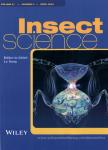Forecasting Helicoverpa populations in Australia: A comparison of regression based models and a bioclimatic based modelling approach
Forecasting Helicoverpa populations in Australia: A comparison of regressionbased models and a bioclimatic based modelling approach作者机构:SchoolofIntegrativeBiologyTheUniversityofQueenslandStLuciaBrisbaneQueensland4072Australia
出 版 物:《Insect Science》 (昆虫科学(英文版))
年 卷 期:2005年第12卷第1期
页 面:45-56页
核心收录:
学科分类:0710[理学-生物学] 0830[工学-环境科学与工程(可授工学、理学、农学学位)] 07[理学] 09[农学] 0904[农学-植物保护] 0901[农学-作物学] 090402[农学-农业昆虫与害虫防治] 0713[理学-生态学]
主 题:澳大利亚 种群数量 预测方法 生物气候学 迁移 Helicoverpa 害虫防治 种群地理分布
摘 要:Long-term forecasts of pest pressure are central to the effective management of many agricultural insect pests. In the eastern cropping regions of Australia, serious infestations of Helicoverpa punctigera (Wallenglen) and H. armigera (Hübner)(Lepidoptera:Noctuidae) are experienced annually. Regression analyses of a long series of light-trap catches of adult moths were used to describe the seasonal dynamics of both species. The size of the spring generation in eastern cropping zones could be related to rainfall in putative source areas in inland Australia. Subsequent generations could be related to the abundance of various crops in agricultural areas, rainfall and the magnitude of the spring population peak. As rainfall figured prominently as a predictor variable, and can itself be predicted using the Southern Oscillation Index (SOI), trap catches were also related to this variable. The geographic distribution of each species was modelled in relation to climate and CLIMEX was used to predict temporal variation in abundance at given putative source sites in inland Australia using historical meteorological data. These predictions were then correlated with subsequent pest abundance data in a major cropping region. The regression-based and bioclimatic-based approaches to predicting pest abundance are compared and their utility in predicting and interpreting pest dynamics are discussed.



